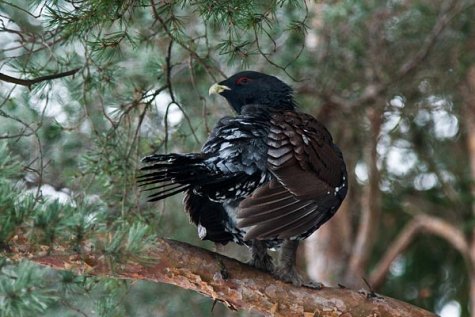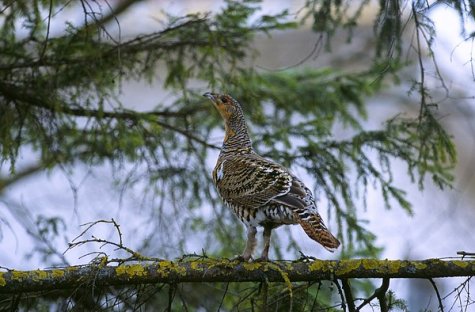Capercaillie - a bird of pine trees
Photos: Arne Ader
Translation: Liis
Capercaillie cock
Capercaillie Metsis e mõtus Tetrao urogallus
Typical locations for seeing capercaillies in winter are pine tree forests around major marsh and bog landscapes, with little human disturbances. The capercaillie is our largest wild hen bird; a stocky full-grown cock can weigh around four kilos; the hens less than half that. The capercaillie’s legs are covered with hair-like feathers. For the winter they become denser and horn strips or tacks grow on the sides of the toes, helping to grip icy pine branches and to run on thick snow. Even in winter they keep busy on the ground; as the snow cover grows pine needles with little nutritional value become the main food.
A splendid view – the goose-sized forest bird in a tree. For one meal it must eat at least a couple of hundred grams of needles. To "grind down“ the hard and sharp needles the birds, characteristically for the Galliformes birds, need small gravel stones, which is why capercaillies can be seen picking up gravel on remote roads that have been cleared from snow. The hair-like feathers on the feet and the horn strips on the toe sides help to hold on to pine branches when they spend the night in a dense pine top, and to run easier on the snow.
The numbers of foxes, raccoon dogs and pine martens are high, and because of these predators the number of capercaillies is low. Of course wolves and lynxes too hunt capercaillies ... The winter number is estimated at about three thousand birds.
Capercaillie hen










